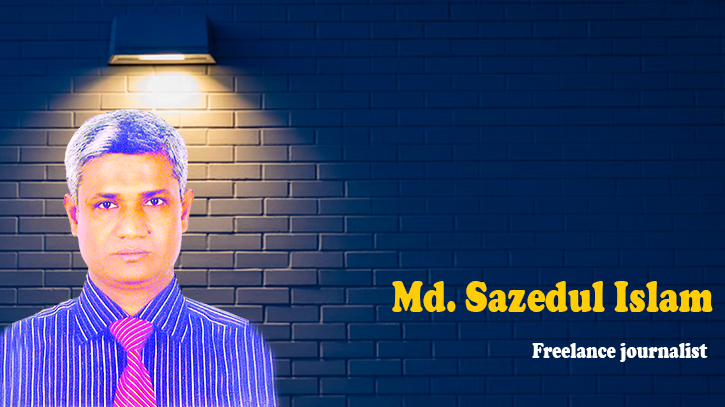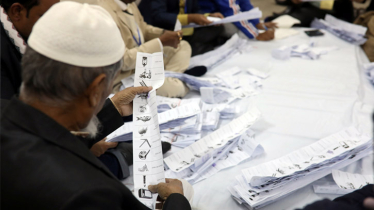
'World Leprosy Day' this year will be observed across the world, including in Bangladesh, on January 28. The day is traditionally observed on the last Sunday of January every year to raise awareness on a leprosy-free world and the disease, as well as helping to establish the rights of persons affected by leprosy.
Leprosy is a treatable disease and the affected people have the right to be included in the society, this day brings an opportunity to educate people on this issue. On the occasion, individuals, organisations and governments are urged to work together to address the challenge of leprosy and build a leprosy-free world.
Persons affected by leprosy, who were already in trouble, got into more trouble during the outbreak of Corona due to various restrictive measures, including lockdown. Many lost their means of earning a living and failed to receive treatment for their diseases. Leprosy programmes were also hampered, and because of this the detection of new leprosy cases could not be done properly during the time. Such incident happened across the world, including in Bangladesh.
We need to redouble our efforts to overcome the stagnation in anti-leprosy activities caused by Corona to create a leprosy-free world. This year’s theme of the day is 'Ending Stigma, Embracing Dignity'. The theme reminds us to continuously work towards eradicating the stigma associated with leprosy and to promote the dignity of people affected by leprosy.
The stigma is being created because of lack of proper knowledge among people. As a result, the affected people, instead of self-reporting, are hiding their diseases. We need to launch a massive awareness campaign, including using the mass media, across the country about the issue and also train physicians and health workers for detection of new cases through door-to-door visit.
The disability caused by leprosy is the main cause of stigma. The disease is treatable with timely and proper treatment. So, timely treatment is essential for preventing disabilities caused by leprosy. The government should be engaged in raising mass awareness and for taking the necessary steps for early case detection and bringing the affected people under timely treatment.
Due to misconceptions about leprosy among people, the affected persons have been victims of discrimination in the society for ages. Because of this discrimination, people with this disease in different parts of the world are isolated from families, societies and friends and are deprived of facilities like education and employment. A dire consequence of such discrimination is the creation of self-stigma among the victims.
The International Federation of Anti-Leprosy Associations (ILEP), a Switzerland-based federation of 13 international anti-leprosy non-governmental organisations, took the initiative to celebrate this day. The first initiative to observe the day was taken on the last Sunday of January 1954.
The World Health Organisation (WHO) later endorsed the initiative, taking the necessary measures for its dissemination globally. Leprosy, one of the oldest diseases, is the cause of immense suffering. Since the 60s in Bangladesh, the outbreak of this disease has been widespread. If not treated in time, this disease causes serious physical complications and manifests disability. At present, there is no discriminatory law against leprosy sufferers and their family members in our country. However, their inclusion is still a challenge in terms of social, economic, educational and employment opportunities.
Leprosy is not only a physical disease but also a social disorder and cause of discrimination. But leprosy is not a terrible disease or curse. It is a curable disease. It is important to remove the common misconceptions and myths about this disease and bring the affected people under timely treatment and involve them in the mainstream of society so that no one suffers from physical, mental and social disabilities due to this disease.
Citing a report by WHO, Bangladesh’s National Leprosy Programme (NLP), said that Bangladesh ranks 6th among the 23 countries with high rates of leprosy while Bangladesh ranks 10th in terms of the disability caused by leprosy.
The NLP said a large number of leprosy patients remain undetected in the country. Although 3000–3500 leprosy cases are detected every year in the country, the actual number is more than twice the figure. The undetected patients later become disabled, turning them into a burden on the country and the country loses its working population.
According to the Leprosy Mission International-Bangladesh (TLMI-B), an organisation working on leprosy, about 6% to 8% of patients diagnosed with leprosy become disabled later due to a lack of timely treatment. Moreover, another 5% of patients initially face problems such as loss of hand sensation who later become disabled due to a lack of appropriate treatment. For those who become disabled due to leprosy, early reconstructive surgery can prevent their disability. For this, it is necessary to arrange reconstructive surgery in the medical college hospitals of the country.
In line with its vision of 'Global Leprosy Strategy 2021–2030', WHO has called on countries in the world to take swift action to achieve zero levels of leprosy and the transmission, disability, stigma and discrimination caused by the disease.
However there are several challenges in the leprosy sector in our country. According to NLP, the challenges in this sector are the inadequacy of financial and manpower of the National Leprosy Programme, the lack of programmes to increase public awareness, lack of capacity of service providers, inadequacy of participatory activities by public representatives, inadequacy of activities for rehabilitation of disabled people, and existing stigma and discrimination related to leprosy in society.
According to rights activists working on the leprosy issue, the challenges in the leprosy sector are less emphasis being given to the leprosy programme, lack of funding and staff for the leprosy programme, which results in deficiency of initiative to detect leprosy cases; lack of activities aimed at raising awareness and training for capacity building of employees and service providers.
Besides, many employees are supposed to work for both TB and leprosy programmes, but they are unable to devote time to the leprosy programme as the workload of the TB programme is too high. It cannot continue like this anymore, because we are nationally committed to bringing down leprosy in our country to the level of zero by 2030.
To build a leprosy-free country, it is first necessary to have a specific plan till the year 2030 and allocate sufficient funds in the national budget. The plan includes increasing the number of workers and building their capacity and skills, capacity building of the serving population (such as doctors, health workers), social awareness-raising activities, actively identifying potential leprosy cases and ensuring medical care, including diagnosis.
Above all, proper implementation of the plan through well-planned monitoring from the central level to the field level is very important.
The writer is a freelance journalist.
Messenger/Fameema








